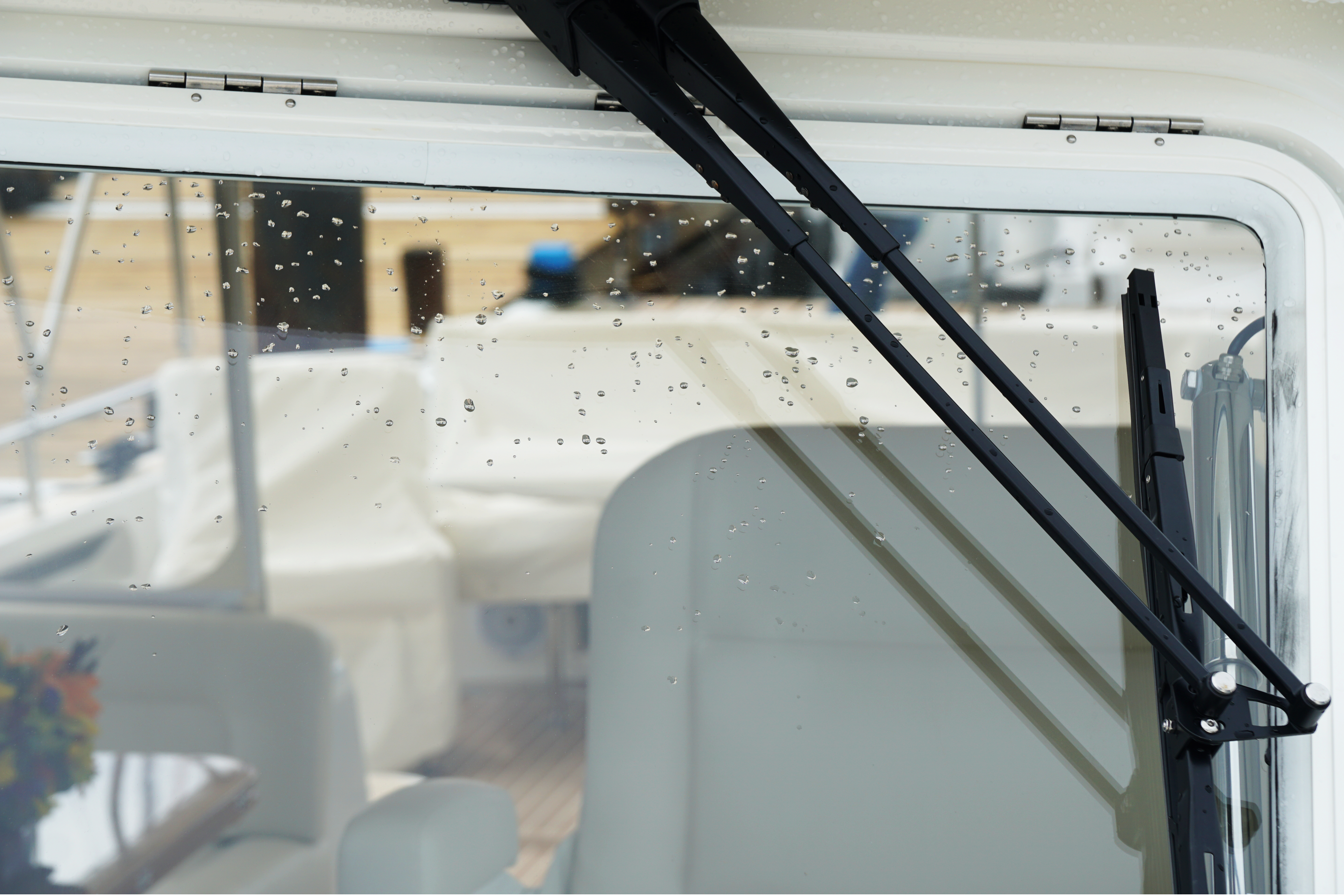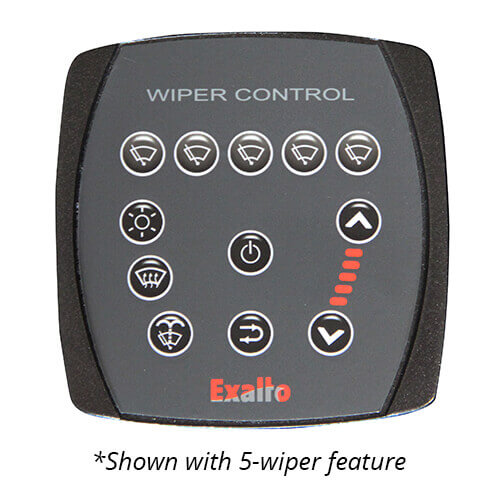Though often overlooked, windshield wipers are an integral piece of safety equipment on many powerboats and yachts. While many boaters don’t ever plan to go out on rainy or stormy days, we all know conditions on the water can change in a hurry, and it’s always best to be prepared. In many cases, boaters don’t consider their windshield wiper system, or lack thereof, until they absolutely need it in heavy seas or rain.
If the helm station of your boat is behind a windshield, it would be a good idea to consider installing a wiper system if you don’t already have one, or learn more about your existing system and consider upgrading if it doesn’t fit or work properly. In this article, we’ll take a look at the components of a wiper system, and the process to install them.
The first step when considering a wiper system is to determine which style of system is best for you. To learn more about the different styles and which might be best for you, check out our articles on how to choose the right system, and the cost factors to consider before purchasing. Once you’ve chosen a new wiper system, or components to replace, it’s time to consider the installation process.
Every wiper installation is different considering most boats and yachts have unique windshield sizes and shapes. On the simplest end of the spectrum, a wiper system is comprised of 4 components: a motor, an arm, a blade, and a control to turn the system on and off. On the more complicated end, a wiper system will involve multiple pieces of glass requiring multiple motors that synchronize, an electronic control panel and a windshield washing system. The number of components in your system will determine the ease or complexity of installation, and it’s always a good idea to consult a qualified marine technician if you’re unsure of your own ability to complete the installation.

Wiper Motors
The vast majority of wiper motors on recreational boats are installed inside the boat, and have shafts that penetrate the bulkhead either above or below the glass. The available space to mount the motor is usually the determining factor in whether it goes above or below the windshield, though the sight-line of the captain is also a factor to consider if it happens to fall particularly low or high on the glass.
Most wiper motors will have either one or two drive shafts that connect to the arm, depending on whether it’s a pendulum or pantograph style, on one side of the motor, and a bolt or screw to fasten the other end of the motor to the bulkhead. So installing them is relatively straight forward: drill the hole(s) for the drive shaft(s) of whatever size is specific to that wiper motor, and then insert the drive shaft(s) into place. There will usually be a washer and nut that go onto the drive shaft, which will typically be threaded, to secure that end of the motor into place. Some sealant to ensure no water gets through the gaps may also be required. Then you’ll just need to drill the screw hole and screw the opposite end of the motor into the bulkhead to secure it in place. The larger and heavier the motor is, the more fasteners it will require to install.
Wiper Arms
Depending on the brand and style, the wiper arm will attach to the motor drive shaft in different ways, but it’s typically a straightforward process. Some are just press-fit onto tapered shafts, using friction as the connection, while others are secured with a nut threaded onto the end of the shaft, and some involve a collar and a set screw that tightens the collar around the drive shaft. No matter the attachment style, securing the wiper arm to the motor drive shaft is not difficult.
The more trickier part of installing the arm is making sure it’s installed in the proper position such that when the motor is turned on, it sweeps in the correct direction on the glass and clears the intended area of the windshield. Every wiper manufacturer has a different process for setting the proper sweep angle and installing the arm in the proper place, so be sure to carefully consult the installation manual for your particular wiper system. Below is an example of installing a Roca W12 motor and pendulum arm.
Wiper Blades
Wiper blades, like arms, also have different attachment styles to the wiper arms, but all styles are simple to install. The most common attachments are J-Hook style which is commonly used in automobile wiper systems, straight-connectors that snap into place, and bolt-through connections which involve a small threaded bolt going through the frame of the wiper blade and is then secured in place with a nut.
Control Switch or Panel
For controlling your wiper system there are lots of options ranging from simple on/off switches to multi-wiper electronic control panels and everything in between. Determining which wiper control is best for you comes down to how many wiper motors you have, and how you will use your wipers.
If you have only one wiper, and you’re likely not to be running in bad weather but use it just to wipe occasional spray, then a single-speed on/off switch to activate the wiper only when you need it is probably the best option. Conversely if you have multiple wiper motors and consistently run your boat in heavy seas and wet weather, an electronic control panel with multiple speed options and synchronization might be a better choice. So before choosing the control for your wiper system be sure to consider how many wipers you have and how often you’ll need to use them so that you can pick the best option to fit your specific needs.
Once you've chosen the control you'll use, installing it involves finding a place on the dash to mount the control, and following the wiring diagrams for both the control and the motor to make sure the wires on the motor are connected to the corresponding functions on the control.

Washing System (Optional)
When installing a wiper system, you may also choose to add a washing system that will spray down the windshield as you wipe. Washing systems are most commonly used on boats that get salt water on the glass and the washing jet simply sprays fresh water to eliminate any caked-on salt. If you operate your boat in freshwater or if your windscreen doesn’t take sea spray and the wipers are strictly for rain, you probably will not need a washing system.
If you do determine a washing system is something your boat needs, it can be added with ease to almost any wiper installation. If you already have pressurized freshwater on the boat, you can simply tap into that system with a small solenoid, or you can add a separate reservoir for washing fluid. All that’s required for either system is the solenoid or reservoir, some ¼” rubber tubing and a sprayer jet which can either be affixed to a bulkhead or clipped right onto the wiper arm, depending on what wiper system you have.
To learn more about all the different available options for wiper motors, arms, blades, controls and washing systems, be sure to download our wiper catalog. If you have any questions, please feel free to reach out and contact one of the experts at Imtra.